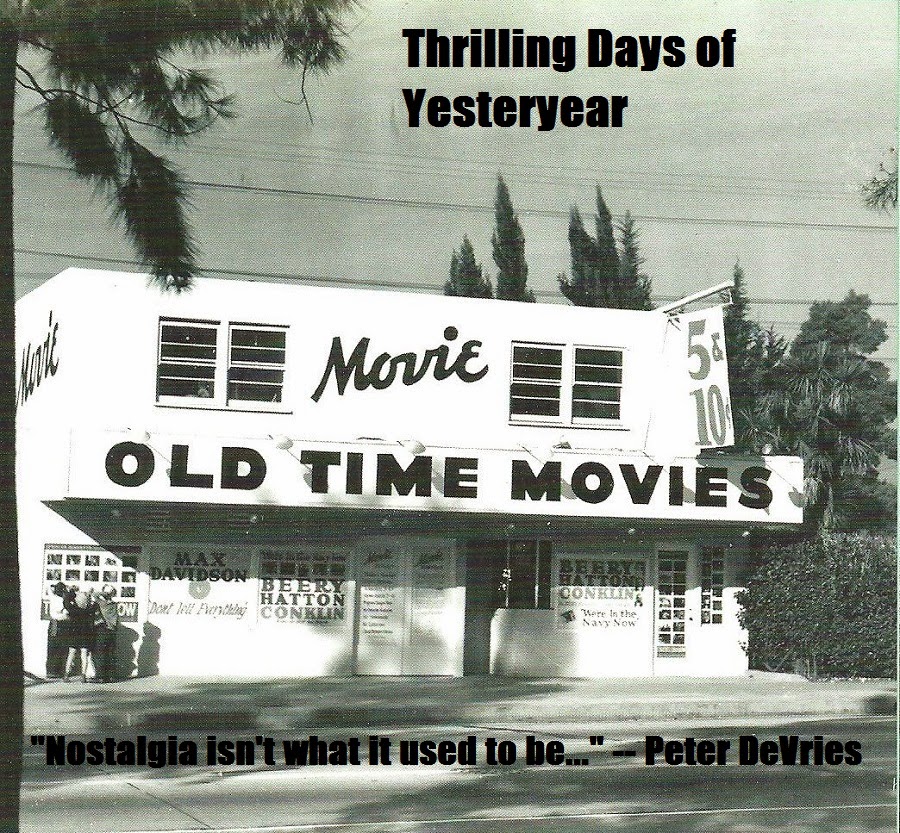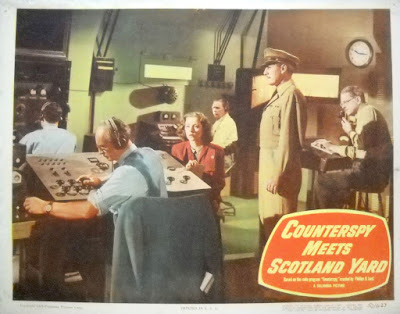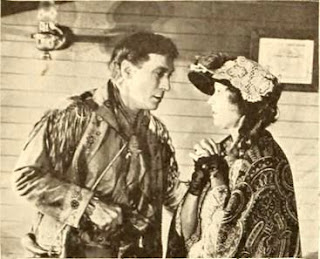The gratuitous back-patting known as the Academy Awards will get underway in less than a month (February 26th this year), and though I haven’t really given the ceremony that much thought, a stray comment from my fellow classic movie pal ClassicBecky on my recent The Long Walk Home review set in motion an idea for a post:
I was particularly interested in
your view of actors winning Oscars for the wrong movies. Made me think of
Russell Crowe winning the Oscar for "Gladiator", in which his
predominant line of dialogue was the monotonal "I am Maximus." Then
the very next year, losing the Oscar for his truly remarkable performance in
"A Beautiful Mind." Huh?
There was a time (don’t be frightened by the wavy lines—it’s
just a flashback) when I would await the arrival of the Academy Awards with eager
anticipation. That enthusiasm
disappeared in 1995, when the Best Picture Oscar went to Forrest Gump, a film that beat out far superior movies like Quiz Show and Pulp Fiction for the top
prize. (I apologize to any Gump fans out there…but that odious
piece of fromage gets the 1960s counterculture so wrong it elevates my blood
pressure just thinking about it. Hell,
even the other two features nominated—the romantic comedy trifle Four Weddings and a Funeral and the
so-popular-it’s-stupefying The Shawshank
Redemption—would have been better choices.)
To add insult to injury, Tom Hanks won a second Best Actor Oscar for that travesty; I always think of that
purported observation by Alma Reville to her husband Alfred Hitchcock that
Oscars weren’t too much of a big deal because “after all, Luise Rainer won two of them.”
It wasn’t long after this that I purchased and read with
delight film historian Danny Peary’s wonderful book Alternate
Oscars. Published in 1993, Peary
argues that throughout the history of Academy Awards, the films that should
have been recognized aren’t for a variety of reasons—mostly having to do with Hollywood
politics. (Look, I love How Green Was My Valley as much as the
next person…but is it really a better
film than Citizen Kane—despite Orson
Welles’ on-the-record reverence for John Ford?)
Danny attempts to rectify the many mistakes Oscar has made throughout
its history; sometimes he’s okay with the choices of the Academy of Motion
Picture Arts and Sciences…other times he questions as to whether its membership
was passing around a crack pipe. If you
don’t have this invaluable reference on your movie bookshelf, you need to do so
at your earliest opportunity; it’s available from a number of used bookstore
both online and off (it’s OOP, sadly—Peary seems to be more comfortable writing
sports books these days) but in case you’re curious about its contents, you can
find the
complete list from the book at one of my favorite movie sites: FilmFanatic.org.
In Alternate Oscars,
Danny advocates the taking of many of the trophies from those individuals who
won Academy Awards and reallocating those prizes to actors/actresses more deserving. I agree with many of his choices: how thesps
like Clark Gable (a particular bête noire of mine), Paul Lukas, and
Broderick Crawford ever won Oscars is a mystery to me. (And I say this as someone who loves All the King’s Men.) In other
instances, Peary argues that actors frequently receive Oscars for the wrong
movies. A great example of this is Mary
Pickford, the best actress winner in 1928/29 for Coquette. You people know
the story: they gave “America’s Sweetheart” the acting prize because she wanted
one (the Academy was an organization created to bust unions—you know this as
well). Mary is much better in My Best Girl (1927), and Danny argues
she should have had a statuette for what was her final silent film.
The chief culprit to consider when you say to yourself out
loud during an Oscar telecast—“Shadrach, Meshach, and Abednego—surely they’re
not giving him/her an award for that?”—is
that these honors are often handed out for an outstanding body of work…not
because they were really, really good in a particular film. Even people who defend the Academy Awards
will cop to that. There’s no greater
example of this than Henry Fonda, who finally nabbed a Best Actor trophy in
1982 for playing the “get-off-my-lawn-you-damn-kids” crank in On Golden Pond (1981)—then Hank went on
to an even greater reward a few months after (when he snuffed it). I don’t think Fonda ever gave a better
performance onscreen than as Tom Joad in The
Grapes of Wrath (1940) …but they didn’t give him that Oscar because they
were too busy giving his bosom buddy James Stewart the Best Actor prize for The Philadelphia Story (1940).
The general agreement was that Stewart got his Oscar that year for being
ignored previously for Mr. Smith Goes to
Washington (1939).
I’m not a fan of The
Philadelphia Story, chiefly because the romantic problems of rich people
rarely register high on my personal Give-a-Damn-O-Meter. I’d argue that Jimmy is much better in It’s a Wonderful Life (1946—this gets Stewart his “Alternate Oscar” in
Peary’s book) and if he was shut out that year by The Best Years of Our Lives juggernaut, the Academy could have always
waited for Vertigo (1958) or Anatomy of a Murder (1959). By that same token, Henry Fonda gave
first-rate performances in The Ox-Bow
Incident (1943), The Wrong Man
(1956), Fail-Safe (1964), and Once Upon a Time in the West (1968). My personal Fonda fave is Fort Apache (1948); a journalist once
asked Hank’s son Peter what his famous dad was like off-screen and Pete asked
him if he’d ever seen Fort Apache. When the reporter applied in the affirmative,
Fonda remarked: “That’s what he was like off-screen.”
Speaking of John Wayne (well, he’s in Fort Apache as well)—the Duke got his “Atta boy” from his peers for
True Grit (1969) …even though he was
just being John Wayne in an eyepatch. To
be frank, John Wayne pretty much played John Wayne in every movie he was in…but
he could occasionally step up to the place and hit one out of the thespic park. It’s no coinky-dink that these performances
were in films directed by the aforementioned Mr. Ford: She Wore a Yellow Ribbon (1949—my personal favorite), The Quiet Man (1952—Peary’s pick in AO),
The Searchers (1956) …and even The Man Who Shot Liberty Valance (1962).
(I always forget how splendid that movie is until I take the time to sit down
with it again.)
Here’s a short list of some more actors who won Oscars for
the wrong movies. I didn’t include
actresses on this list—not because I’m being chauvinistic, but because I was
racing a deadline for this post and decided it would be better tackled in a
follow-up next week.
Humphrey Bogart –
Despite my love for Bogart, most of his movie roles were, like John Wayne,
variations on his established persona—including The African Queen (1951), the one that earned him his Oscar. But Bogie gives much more interesting (and in
my opinion, better) performances in films like The Treasure of the Sierra Madre (1948) and In a Lonely Place (1950). My
sentimental favorites are Deadline –
U.S.A. (1952) and Humphrey’s swan song, The Harder They Fall (1956).
Rod Steiger –
Speaking of The Harder They Fall, I
think Steiger’s turn as the autocratic mobster Nick Benko is sensational;
Steiger is a difficult guy to pin down because…well, let’s not mince words: he
could chew up the scenery when inclined (which is why his serial killer in 1968’s
No Way to Treat a Lady should have
been Academy Award-worthy—it plays perfectly to this handicap). Rod got his Oscar for In the Heat of the Night (1967), but my personal pick is his role
in The Pawnbroker (1964). (I would also have accepted his psychiatrist
in The Mark [1961] as an answer.)
Sidney Poitier –
I truly think Poitier gives the better performance in In the Heat of the Night as Virgil Tibbs, but the Academy had
already given Sidney honors for 1963’s Lillies
of the Field. I have never been able
to understand why this great actor got overlooked for A Raisin in the Sun (1961—my choice). Other outstanding Poitier choices include Cry, the Beloved Country (1951), Edge of the City (1957), and Something of Value (1957).
Burt Lancaster –
I’ve said it many times in the past: Burt Lancaster’s acting got better and
better with age. You can see the genesis
of this in my favorite of his films, The
Swimmer (1968) …but he was really on fire by the time he made Atlantic City (1980—this is the one I’d
hand him an Oscar for), Local Hero
(1983), and Field of Dreams
(1989). Peary takes Burt’s trophy for Elmer Gantry (1960) and gives it to
Anthony Perkins for Psycho (ignoring
the fact that Perkins played variations on Norman Bates pretty much the entirety
of his career). Not even an honorable
mention for Sweet Smell of Success
(1957—maybe he thought Burt was a supporting actor in this one)!
Charlton Heston –
You might have seen the gag in Wayne’s
World 2 (1992); an inconsequential bit player (Al Hansen) finds himself
switched out with a “better actor”—none other than Heston himself. I probably laughed harder at the irony of
Charlton being considered a good actor because…I don’t think he was all that
and a bag of chips. Heston won for Ben-Hur (1959), but if we consult The
Blind Squirrel Theory of Film™ he was at his very best for the titular role of Will Penny (1968). (I once had a dream where I was trapped in an
elevator with Charlton Heston, and all I could do was mock him at every turn: “Get
your stinking paws off me—you damn
dirty ape!”)
Paul Newman –
Newman was nominated for an Oscar six times before the Academy decided to give
him a special trophy…and then the following year, he got the Best Actor prize
for The Color of Money (1986). Paul would score two more nominations
following this (one of them a favorite of mine, 1994’s Nobody’s Fool) …but how he got overlooked for The Hustler (1961—Peary’s choice), Hud (1963), or The Verdict
(1982—this is for me his Oscar-winning performance) is a mystery for the old
man on the mountain.
Jack Lemmon – Lemmon
already had a Best Supporting Actor Oscar on the mantelpiece for Mister Roberts (1955) when his peers decided to throw a Best Actor prize
his way for Save the Tiger
(1973). No, sir. I don’t like it. If he was going to win a Best Actor Oscar it
should have been for either Days of Wine and Roses (1962), The China Syndrome (1979), or Missing (1982—my personal
favorite). Jack received nominations for
all three of those films, not to mention Some
Like it Hot (1959—picked in AO)
and The Apartment (1960). (He’s also
first-rate in 1992’s Glengarry Glen Ross—though
this might be considered a supporting turn.)
Jack Nicholson –
Another multiple winner, Nicholson got his first Oscar for 1975’s One Flew Over the Cuckoo’s Nest—a movie
I revisited not too long ago, and was disappointed that it has not aged
well. (Danny Peary has a dissenting
opinion…but he also argues that Jack’s comic turn in Prizzi’s Honor (1985) should have been honored, and I side with him
on this completely.) I can’t believe
Jack got ignored for three better performances (all of them nominated): Five Easy Pieces (1970—Peary’s pick), The Last Detail (1973), and Chinatown (1974—my choice…though it was
a tough year with all that Godfather II-ing
going on). (Nicholson later won a Best
Supporting for Terms of Endearment [1983] and a second Best
Actor trophy for 1997’s As Good As It
Gets.)
Al Pacino – The Rod
Steiger of his era. I paid good money to
see the film for which they finally gave Pacino an Oscar, Scent of a Woman (1992).
(The only positive thing to come out of that experience was that I
spotted soap stars Bill and Susan Seaforth Hayes in the theatre lobby.) Any
of the 70s films that Al received noms for—The
Godfather and The Godfather: Part II, Serpico, Dog Day Afternoon, …and justice for all (my favorite)—would have
been better choices. (Future nominations
stopped with his Scent Oscar, yet despite
his propensity for scenery chewing, Al’s given some wonderful performances in
the twilight of his career: Donnie
Brasco [1997], The Insider
[1999], Insomnia [2002], etc.)
Denzel Washington
– They passed on giving Denzel a second Oscar (he had won a Best Supporting for
1989’s Glory) in 1993 because
everybody liked the way Pacino constantly hollered “Hoo-hah!” in the previously
mentioned Scent of a Woman. Denzel should have been the winner that year,
but he’d have to wait until his name was called for a Best Actor Oscar for Training Day (2001). (He even got snubbed for the excellent For Queen and Country [1988].)
















































